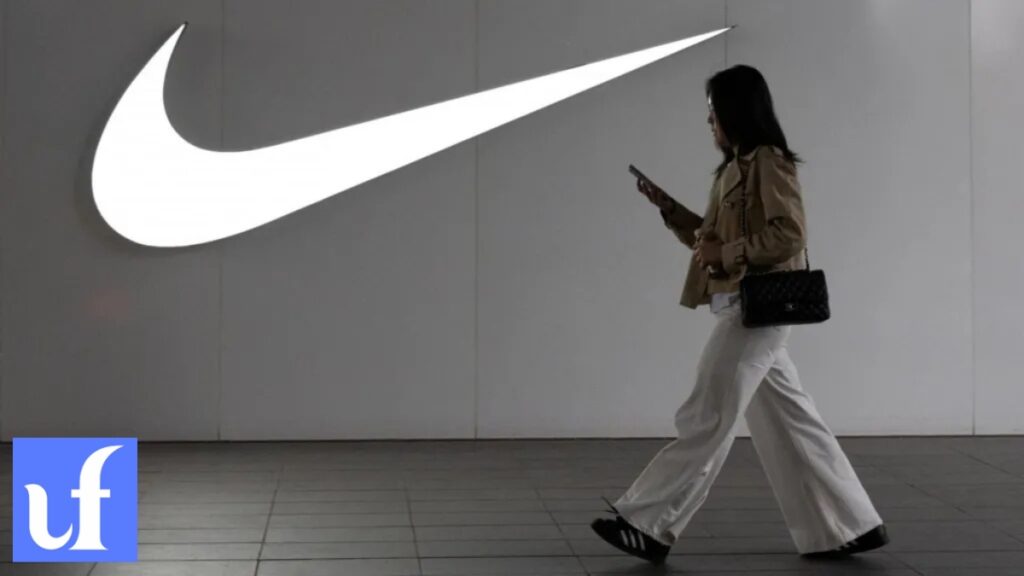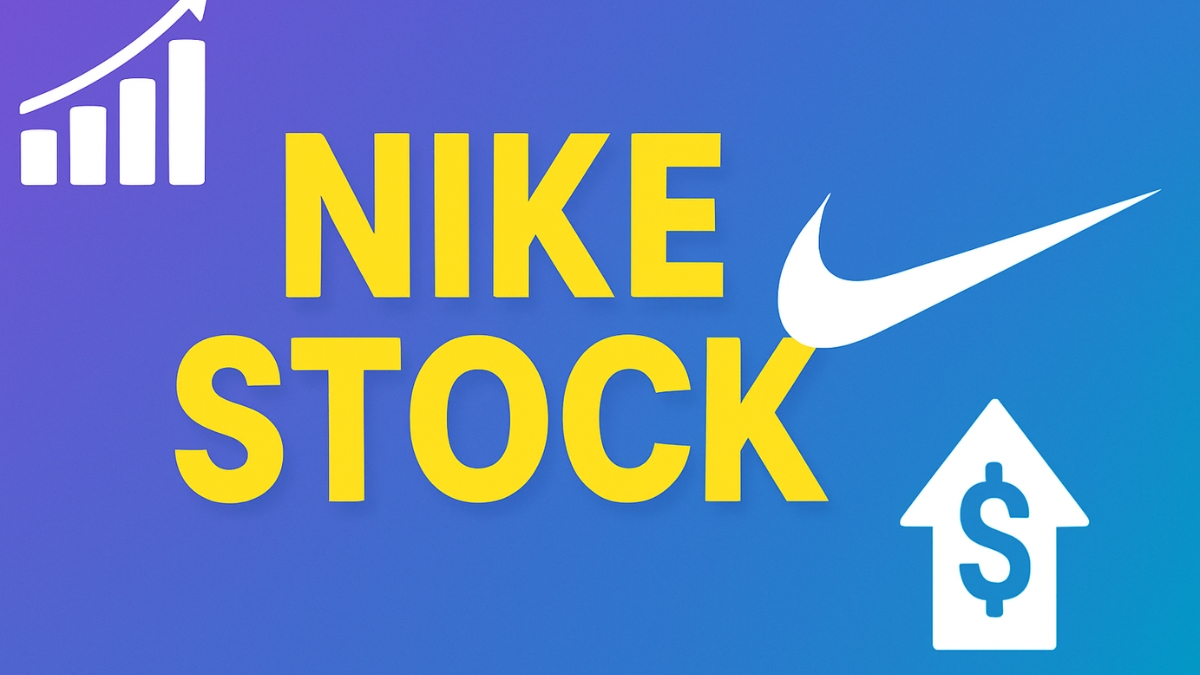Nike, a global leader in sportswear, recently announced a $1 billion tariff bill that has sparked significant interest among investors. This development, tied to U.S. tariffs on Chinese imports, raises questions about its impact on Nike stock (NKE). While the cost is substantial, Nike’s proactive strategies and better-than-expected Q4 2025 earnings have influenced NKE stock positively. This article explores the tariff issue, Nike’s response, its financial performance, and what it means for investors interested in Nike stock.
Table of Contents
Understanding Nike’s $1 Billion Tariff Bill
What Are the Tariffs?
The $1 billion tariff bill stems from U.S. duties on imports from China, where 16% of Nike’s U.S. footwear production originates (AInvest). These tariffs, linked to trade policies under the Trump administration, increase the cost of goods imported into the U.S. Tariffs are taxes imposed on imported goods to protect domestic industries or address trade imbalances, but they can significantly raise costs for companies like Nike that rely on global supply chains.
Why Does It Matter?
For Nike, this tariff bill represents a gross incremental cost increase for the current fiscal year, impacting profitability. The company’s reliance on Chinese manufacturing makes it vulnerable to such trade policies. However, the market’s reaction suggests that investors are focusing on Nike’s strategic responses rather than the immediate financial hit.
Nike’s Strategic Response to Tariffs
Shifting Production Away from China
Nike plans to reduce its manufacturing in China from 16% to a high single-digit percentage by the end of fiscal 2026 (Economic Times). This shift involves moving production to countries like Vietnam, where currency advantages could improve margins. This strategy aims to mitigate tariff costs and diversify supply chains, a move that has been well-received by investors, as evidenced by the stock’s positive movement.
Price Adjustments
To offset the tariff costs, Nike is implementing “surgical” price increases in the U.S. starting this fall. These targeted adjustments aim to maintain profitability without alienating consumers. This approach demonstrates Nike’s ability to adapt to economic pressures while preserving its brand strength.
Read More: – Ally Bank Review 2025: Your Guide to Online Banking Excellence
Collaborative Efforts
Nike, along with competitors like Adidas, Under Armour, and Puma, signed a joint letter in April 2025 requesting exemptions for footwear from reciprocal tariffs. This collective action highlights the industry’s concern about tariff impacts and Nike’s proactive stance in addressing them.
Key Points
- Tariff Impact: Nike expects a $1 billion cost increase due to U.S. tariffs on Chinese imports, affecting its financials.
- Stock Reaction: Despite the tariff hit, Nike stock (NKE) rose approximately 2.84% after the Q4 2025 earnings, with reports of up to a 10% surge in after-hours trading.
- Strategic Response: Nike plans to shift production from China and implement price increases, boosting investor confidence.
- Earnings Performance: Nike’s Q4 2025 revenue of $11.1 billion and EPS of $0.14 beat analyst expectations, though profits dropped significantly year-over-year.
- Investor Outlook: Analysts have mixed views, with some optimistic about a turnaround and others cautious due to ongoing challenges.
Nike’s Q4 2025 Financial Performance
Earnings Highlights
Nike’s Q4 2025 earnings, released on June 26, 2025, provided critical context for the tariff announcement (CNBC). Key financial metrics include:
| Metric | Q4 2025 | Q4 2024 | Change | Analyst Expectation |
|---|---|---|---|---|
| Revenue | $11.1B | $12.61B | -12% | $10.72B |
| Net Income | $211M | $1.5B | -86% | N/A |
| EPS | $0.14 | $0.99 | -86% | $0.13 |
Despite significant year-over-year declines, Nike beat analyst expectations, which contributed to a positive stock reaction. The company reported a gross margin of 40.3% and a gross profit of $4.47 billion, indicating resilience amid challenges.
Turnaround Efforts
Under new CEO Elliott Hill, Nike is executing its “Win Now” strategy to reposition the business. The Q4 results were described as the low point of this turnaround, with expectations of moderating declines in sales and profits moving forward. This optimism, coupled with the tariff mitigation plans, has bolstered investor confidence.
Stock Market Reaction

Immediate Response
Following the Q4 2025 earnings release on June 26, NKE stock saw a significant uptick in after-hours trading, with reports indicating a 10% increase (X post by @garyblack00). On June 27, the stock closed at $62.61, up 2.84% from the June 25 close of $60.83 (Yahoo Finance). Some sources reported a 15% jump at the opening bell, though the closing price suggests a more modest gain.
Year-to-Date Performance
Despite the positive reaction, Nike stock has faced challenges, declining 15% year-to-date and 34% over the past year, underperforming the S&P 500’s 12% gain (X post by @garyblack00). The tariff announcement and earnings beat have sparked renewed interest, but the stock’s long-term trajectory remains uncertain.
Analyst Opinions and Future Outlook
Analyst Perspectives
Analysts have mixed views on NKE stock. Morgan Stanley lowered their price target to $61 from $70, citing a longer-than-expected turnaround (Investopedia). Conversely, Bank of America maintains a bullish $80 target, focusing on Nike’s future guidance. Of 17 analysts tracked by Visible Alpha, eight rate Nike as a “buy,” eight as a “hold,” and one as a “sell,” with an average price target of $82.
Also Read: – CYN Stock: A Deep Dive into Cyngn Inc.’s Surge and Potential in 2025
Opportunities and Risks
Nike’s strategic moves, such as supply chain diversification and new product launches like the Pegasus Premium, position it for potential recovery. However, risks include ongoing tariff pressures, competition from brands like On Holding, and macroeconomic challenges. Investors should weigh these factors when considering Nike stock.
FAQs
1. What Is the Impact of the $1 Billion Tariff Bill on Nike’s Stock?
The $1 billion tariff bill, resulting from U.S. duties on Chinese imports, represents a significant cost increase for Nike, impacting its profitability. Announced alongside the Q4 2025 earnings, this news initially raised concerns among investors. However, Nike’s proactive strategies, including shifting production away from China and implementing price increases, have mitigated some of these concerns. Following the earnings release on June 26, 2025, NKE stock rose approximately 10% in after-hours trading, reflecting investor optimism about Nike’s ability to manage these costs (X post by @garyblack00). By the close of June 27, the stock was up 2.84% at $62.61, suggesting a tempered but positive market response (Yahoo Finance). The tariff bill’s long-term impact depends on Nike’s success in diversifying its supply chain and maintaining consumer demand amidst price adjustments. While the immediate stock reaction was positive, the stock’s 15% year-to-date decline indicates ongoing challenges. Investors should monitor Nike’s execution of its “Win Now” strategy and global economic conditions to assess future performance.
2. How Is Nike Planning to Mitigate the Effects of Tariffs?
Nike is addressing the $1 billion tariff bill through a multi-faceted approach. Firstly, the company plans to reduce its manufacturing in China from 16% to a high single-digit percentage by the end of fiscal 2026 (Economic Times). This shift involves relocating production to countries like Vietnam, where favorable currency dynamics could enhance margins. Secondly, Nike is implementing “surgical” price increases in the U.S. starting this fall to offset tariff costs without significantly impacting demand. Additionally, Nike has collaborated with competitors like Adidas and Under Armour to lobby for footwear exemptions from tariffs, indicating a proactive stance in policy advocacy. These strategies aim to reduce the financial burden of tariffs while maintaining Nike’s competitive edge. The market’s positive response, with NKE stock rising post-earnings, suggests confidence in these measures. However, the success of these initiatives depends on execution and consumer response to price changes, which investors should closely monitor.
3. What Were Nike’s Q4 2025 Earnings Results?
Nike’s Q4 2025 earnings, released on June 26, 2025, showed a revenue of $11.1 billion, down 12% from $12.61 billion the previous year, but surpassing analyst expectations of $10.72 billion (CNBC). Net income was $211 million, or $0.14 per share, a significant 86% drop from $1.5 billion, or $0.99 per share, in Q4 2024, yet it beat the expected $0.13 per share. The gross margin was 40.3%, with a gross profit of $4.47 billion. Despite the declines, these results were seen as the low point of Nike’s turnaround efforts under CEO Elliott Hill’s “Win Now” strategy. The company highlighted progress in new product launches and expects sales and profit declines to moderate moving forward. The better-than-expected results contributed to a positive stock reaction, with NKE stock gaining in after-hours trading. Investors should note that while the earnings beat provided a boost, the significant year-over-year declines reflect ongoing challenges in the sportswear market.
4. Is Now a Good Time to Buy Nike Stock?
Deciding whether to invest in Nike stock requires careful consideration of both opportunities and risks. The recent Q4 2025 earnings beat and Nike’s strategic response to the $1 billion tariff bill have driven a positive stock reaction, with NKE stock rising 2.84% to $62.61 on June 27, 2025 (Yahoo Finance). Analysts are divided, with an average price target of $82 suggesting potential upside, though some, like Morgan Stanley, are cautious due to a prolonged turnaround (Investopedia). Nike’s efforts to diversify its supply chain and innovate with products like the Pegasus Premium are promising, but challenges such as competition and macroeconomic pressures persist. Investors should assess their risk tolerance and consider Nike’s long-term brand strength against short-term uncertainties. Consulting a financial advisor and conducting thorough research are recommended before making investment decisions.
5. How Do Tariffs Affect the Sportswear Industry?
Tariffs, such as those contributing to Nike’s $1 billion cost increase, significantly impact the sportswear industry by raising the cost of imported goods. Many companies, including Nike, Adidas, and Under Armour, rely on manufacturing in countries like China, where tariffs increase production costs. These costs can lead to higher consumer prices, potentially reducing demand, or lower profit margins if companies absorb the costs. Nike’s response, including shifting production and adjusting prices, mirrors industry trends as companies seek to diversify supply chains (Economic Times). The joint letter signed by 76 companies, including Nike, highlights the industry’s collective concern about tariff impacts. While Nike’s stock rose post-earnings, the broader industry faces challenges in maintaining profitability amidst trade uncertainties. Investors should monitor how competitors adapt and whether consumer demand remains resilient in the face of potential price increases.
Conclusion
Nike’s $1 billion tariff bill presents a significant challenge, but the company’s strategic responses and better-than-expected Q4 2025 earnings have instilled optimism in the market. By shifting production away from China, implementing price increases, and focusing on innovation, Nike aims to mitigate the tariff impact and drive a turnaround. NKE stock has shown resilience, rising 2.84% post-earnings, though its year-to-date decline of 15% reflects ongoing challenges. Investors interested in Nike stock should stay informed about the company’s progress and broader market conditions. Share your thoughts on Nike’s strategy in the comments below or subscribe to our newsletter for the latest updates on NKE stock and market trends.







